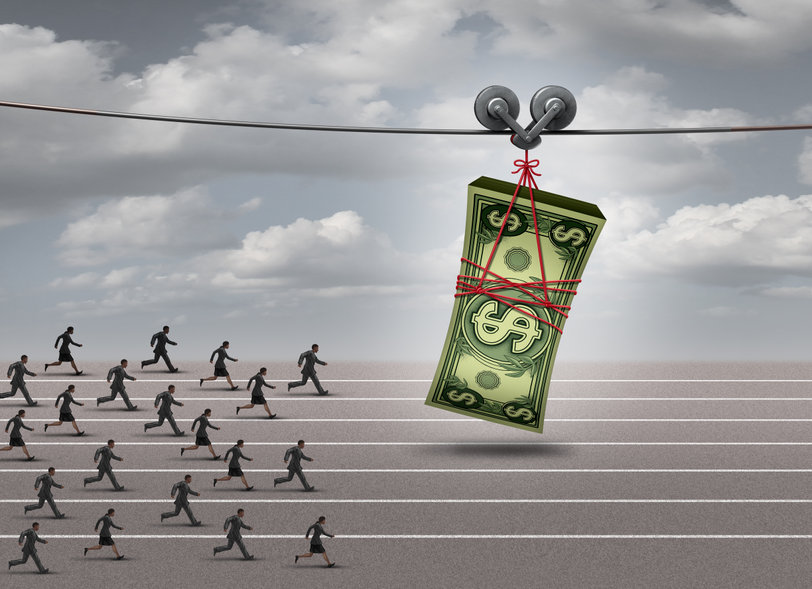
You, readers of this newsletter, are residential real estate investors or seriously considering becoming one. Likewise, I am a committed investor and property manager responsible for the success of over 4,000 residential units … primarily in Virginia with an increasing presence in North Carolina.
So, we share concerns about the current real or imagined potential threats to our collective portfolios … as well as decisions to stay the course, sell or increase ownership. Virtually every media outlet is signaling fears of inflation, recession, employment, unemployment, interest rates and so on.
In this piece, my intent is to rise above the “noise level” of worries and concentrate on one topic … wage inflation as it is likely to affect landlords like you and me. And I’m convinced there is a positive upside for us in rental income, tenant quality and enhanced asset values.
When speaking of wage inflation, consider two categories … one rather obvious, the second more elusive yet just as real. There is Direct Wage Inflation and Indirect Wage Inflation. As a frame of reference accept the fact that at the end of the day, wages = spending power.
Direct Wage Inflation
Direct wage Inflation includes the obvious elements of increased employee compensation, i.e., salary and bonuses. Historically, these have been pretty much predictable based on the pool of capable workers and the willingness and ability of employers to pay.
The pandemic changed the ground rules! Given over 2 years of social distancing, quarantining and expired government subsidies … many Americans are anxious to work, but only with sizable financial inducements … and/or agreement to work remotely. The result is wage inflation driven by strapped employers offering signing-on bonuses and compensation boosted to a pre-pandemic premium.
Landlords Alert!
Bloomberg News, 7/14/22:
“Wage growth continues to outpace rent increases …"
“..... the CPI measure will likely have rent surging into 2023.”
Indirect Wage Inflation
Earlier in this article we agreed that wages = spending power. That means increases in spending power may also be realized from revenue saving events … not just compensation increases. Here are 3 drivers of indirect wage inflation … working remotely, relocating to a more affordable area and likelihood for student loan forgiveness.
Working Remotely
Remote work surged amid the COVID-19 pandemic, and it looks like it’s here to stay. In large measure, that’s driven by more than 80% of workers expect their employers to continue support of remote work. Workers may work remotely full-time or on a hybrid schedule. Currently, roughly two-thirds of the U.S. workforce works from home at least part-time. Conclusion, it’s a safe bet that flexible workspaces will become the norm long-term.
What does that have to do with indirect wage inflation? Depending on where an employee lives, the average person can save about $4,000 per year by working remotely. Here are 3 cost savings that result in more spending power.
Commuting Costs: The average commuter spends between $2,000 and $5,000 per year on transportation costs.
Gas: Pre-pandemic expenditures for the average household was $2,109. No reason to assume that number will decrease now … especially with what we’re seeing at the pump today.
Car Maintenance: Pre-pandemic, employees commuting about 15,000 miles a year spent between $6,354 and $10,054 annually.
Auto Insurance: Not commuting daily with your car will lower your time on the roads and the number of miles you drive. That should result in a cheaper insurance rate.
Public Transportation: Pre-pandemic … people who relied solely on public transportation spent an average of 3% to 4% of their annual income on this commuting expense.
Clothes: Working at home saves about $1,866 … the annual cost for the average household buying clothes and keeping them clean. Jeans, shorts and casual tees are usually enough and thrown in the wash as necessary.
Eating Out: Eating out for lunch and coffee breaks adds up to the tune of $3,459 annually for “food away from home”.
Note: There’s much more to indirect wage inflation. Learn more in the soon-to-be released second in this series of how wage inflation delivers profits to landlords.
At KRS Holdings, we stand by our core principles: Successful property management is based on simple math: Add value to your assets, subtract unnecessary expenses.
Give us a call or drop an email. We’ll respond promptly to relieve
your stress and help you evaluate your property management
options plus maximize your rental property positive cash flow.






